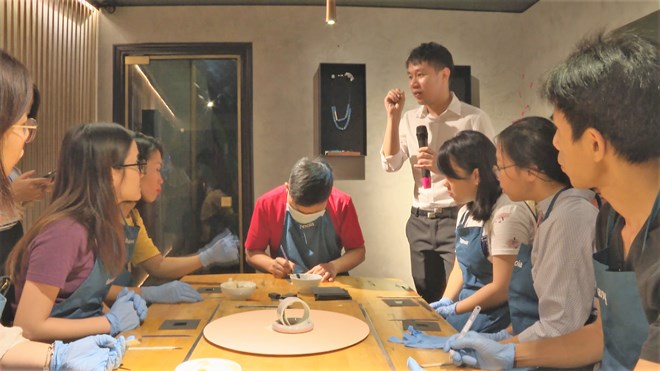The exhibition is organised by Hanoia House – a traditional art exhibition space in Hanoi. Themed “From Inspiration to Reality”, the event offers visitors the chance to get involved in the process of lacquer painting, guided by the instruction of its artists.
Nga found the experience very interesting as she says she now has a much greater insight into how the pieces she admires so much are made.
“When I’ve watched artists making it before, they always made it seem very easy. Yet when I had a go myself, I found it to be very complicated,” Nga said.

Lacquer art was introduced to Vietnam several thousand years ago. It is one of the most ancient art forms in Vietnam.
The art uses various materials and techniques, including ball-point pen, charcoal, watercolour, oil on canvas, and wax paint.
Each lacquer piece has to go through several handmade steps, namely eggshell painting, engraving, hand-painting, application of gold and silver, and colouring.
The process of making a lacquer piece can take over three months. The patience, concentration, and skills of the artists is crucial.

Vietnamese lacquerware feature different designs and forms, ranging from home decor to jewellery. They usually vividly depict Vietnam’s landscape, culture, and daily life.
“We want to reveal the secrets of Vietnamese lacquer art by giving the public a chance to be a part of it,” said Dang Tran Quan, Hanoia House representative.

The exhibits feature lacquer pots, which are inspired by bird cage designs.
“Lacquer pots are among our best seller products in overseas markets,” Quan said, adding that Hanoia House will organise more activities like this to bring traditional art closer to the public.-VNA